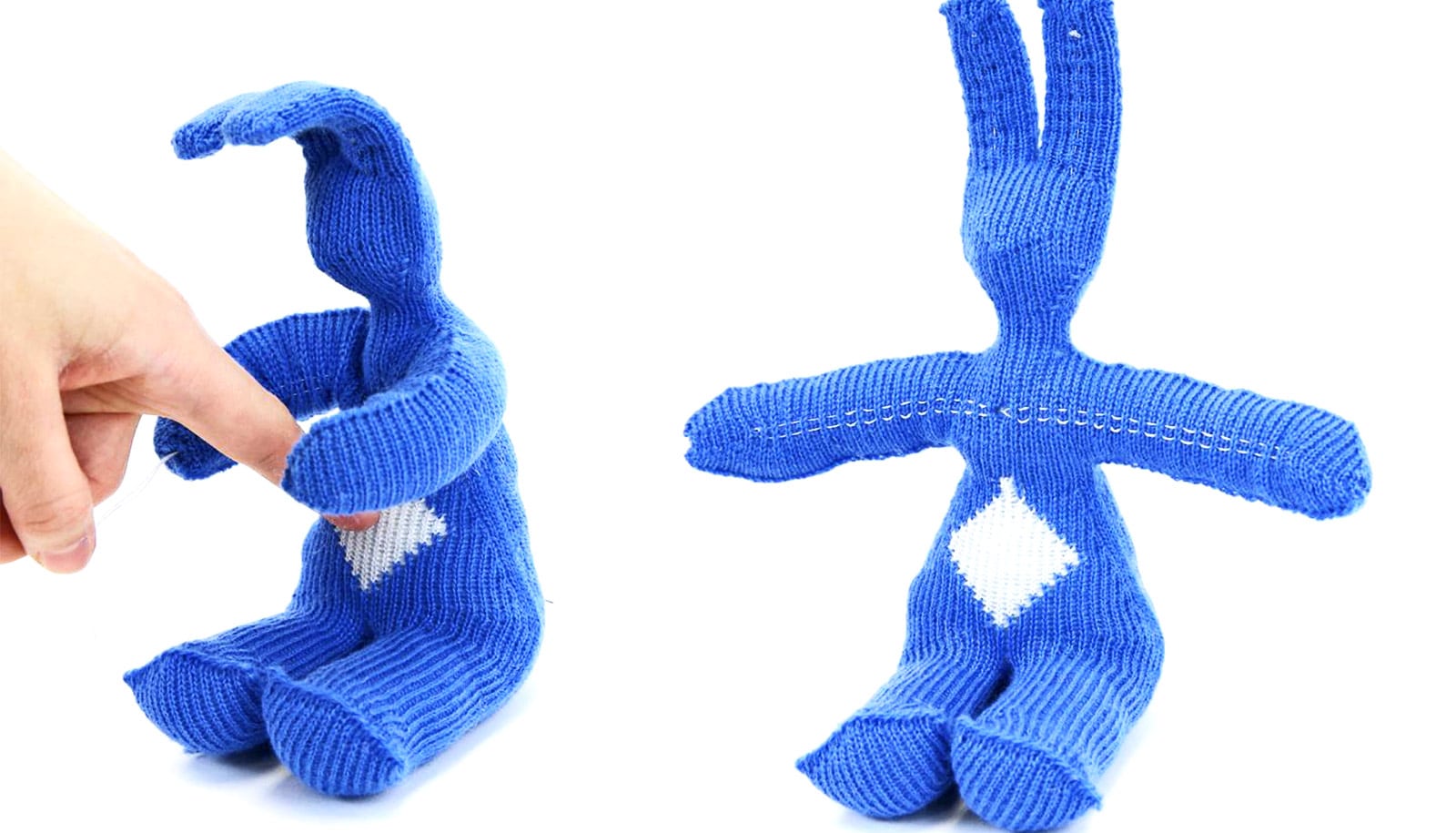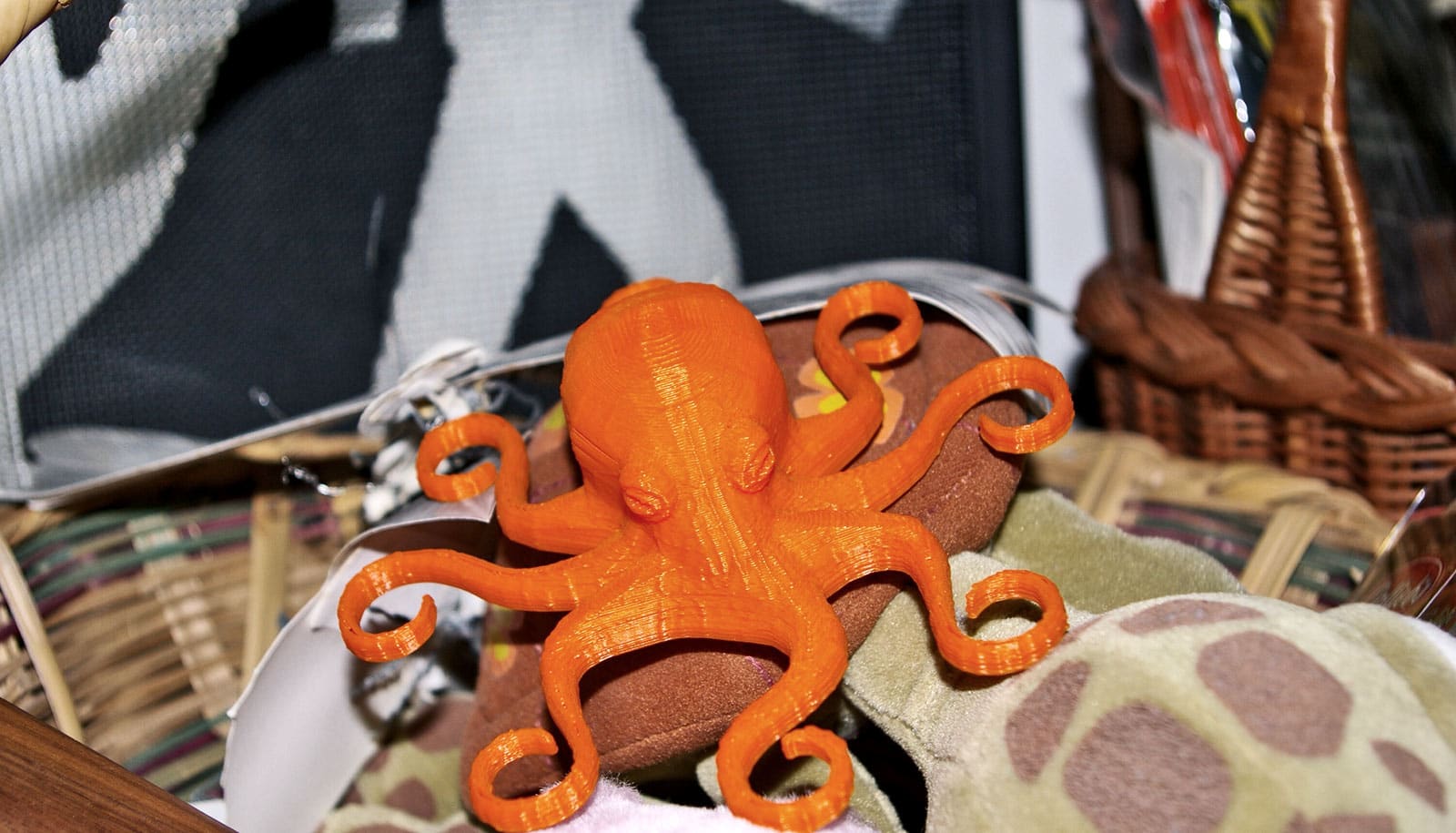Researchers have used computationally controlled knitting machines to create plush toys and other objects that bend and move with tendons.
It’s an approach they say might someday help to cost-effectively make soft robots and wearable technologies.
Software the researchers developed makes it possible for the objects to emerge from the knitting machines in their desired shapes and with tendons already embedded. Researchers can then stuff the toys and attach the tendons to motors as necessary.
Lea Albaugh, a PhD student at Carnegie Mellon University who led the research effort, developed the tendon-embedding technique and explored this design space to make lampshades that change shape, stuffed figures that give hugs when poked in the stomach, and even a sweater with a sleeve that moves on its own. Although largely fanciful, these objects demonstrate capabilities that could eventually have serious applications, such as soft robots.
“Soft robotics is a growing field,” Albaugh notes. “The idea is to build robots from materials that are inherently safe for people to be near, so it would be very hard to hurt someone. Actuated soft components would be cheap to produce on commercial knitting machines.
“We have so many soft objects in our lives and many of them could be made interactive with this technology,” she adds.
“A garment could be part of your personal information system. Your sweater, for example, might tap you on your shoulder to get your attention. The fabric of a chair might serve as a haptic interface. Backpacks might open themselves.”
Commercial knitting machines are widely used, but generally require painstaking programming for each garment. This new research builds on previous work to automate the process, making it easier to use these mass production machines to produce customized and one-off designs.
“It’s a pretty convenient pipeline to use for producing actuated knitted objects,” says Yao, assistant professor in the Human-Computer Interaction Institute. Other researchers have experimented with actuated textile objects, she notes, but have faced the time-consuming task of adding tendons to completed items. Embedding tendons in the materials in the creation process saves time and effort, and adds precision to the actuation.
The researchers developed methods for embedding tendon paths horizontally, vertically, and diagonally in fabric sheets and tubes. They showed that the shape of the fabric, combined with the orientation of the tendon path, can produce a variety of motion effects. These include asymmetric bends, S-shaped bends, and twists. The researchers can adjust the stiffness of the objects by stuffing them with various materials, such as those available to hobbyists.
They can use a number of tendon materials, too, including polyester-wrapped quilting thread, pure silk yarn, and nylon monofilament.
In addition to actuating the objects, these techniques also can add sensing capabilities to objects. By attaching sensors to each tendon, for instance, it’s possible to sense the direction in which the object is bending or twisting. By knitting with conductive yarn, researchers showed they could create both contact pads for capacitive touch sensing and strain sensors to detect if a swatch is stretched.
3D printing already can already produce customized, actuated objects and robotic components, Albaugh says, although the materials often are hard. Computationally controlled knitting has the potential for expanding the possibilities and making the results more people-friendly.
“I think there’s enormous power in using materials that people already associate with comfort,” she says.
Albaugh and her co-investigators will present their research at CHI 2019, the Association for Computing Machinery’s Conference on Human Factors in Computing Systems in Glasgow, Scotland. The National Science Foundation supported part of this research project.
Source: Carnegie Mellon University



